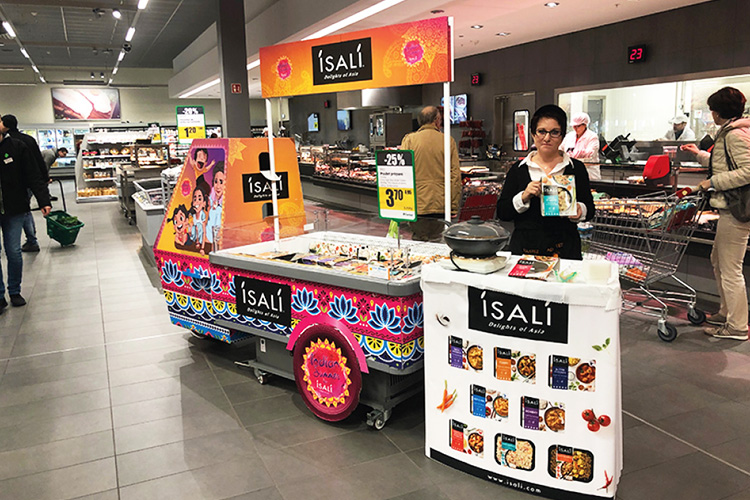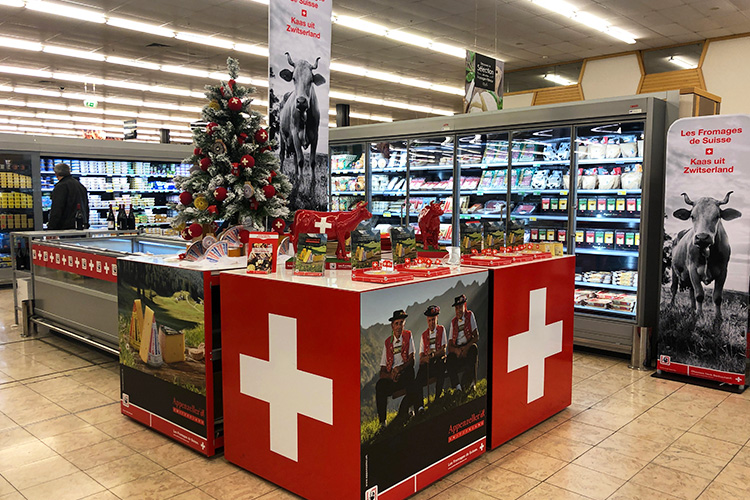The holiday season is a pivotal time for brands and retailers because it generates a huge amount of in-store traffic in a short period of time. So, you don’t want to miss out! And above all, don’t leave it to the last minute… because a successful sales promotion requires some prior planning and therefore time.
In this article, we will therefore see the “best practices” for properly preparing your sales promotion and offering a shopping experience for the consumer that fully contributes to the magic of the end-of-year holidays: drama, decorations, promotions, good deals, etc.
Defining objectives
Before you start implementing sales promotions at the point of sale, first ask yourself the question 👉 Why do sales promotions? And what are your objectives?
Many commercial events do not bring any benefit to the brand because they are often poorly prepared, without specific objectives or because they want to do like the competitor…
No, there is a methodology to follow or at least “good practices” so that your commercial action is impactful and above all has a return on investment (ROI) .
To do this, it is necessary to define precise objectives in advance, which will themselves determine the performance indicators to be measured at the end of the operation (KPIs); we are talking about SMART objectives :
- Specific : increase your sales by 20% on a range of products during the end-of-year holiday period.
- Measurable: it will be wise to have traceability of both quantitative results (number of checkouts, sales or demonstrations made) and qualitative results, such as information collected on the consumer’s profile and purchasing habits via a digital or paper form.
- Achievable : You must provide the means to achieve the set objectives and define the skills needed to implement the action. It will sometimes be preferable to use a specialized service provider.
- Realistic : To know if your objectives are realistic you will have to rely on your previous commercial actions and readjust if necessary.
- Temporal : Your business action must be defined in time and be easily analyzed and compared to past and future actions.
Thus, defining your objectives (sales, loyalty, new product, etc.) will allow you to determine the KPIs or performance indicators to analyze.
The right location
If you are running a promotional campaign in a supermarket, your stand must be located close to the aisle where the rest of the product range is located – yes, this is essential to encourage additional purchases . You will also need to ensure that this stand is clearly visible : focus on high-traffic aisles (shopping mall, end of gondola, central aisle).
For an event at a fair or exhibition, the best locations are most often subject to higher rates… It’s up to you to calculate whether this advantage is profitable, but above all, plan ahead !
Develop a communication strategy
To ensure the success of the operation and put all the chances on its side, it will be essential to communicate judiciously before and during the commercial action. The first thing to do is to define and know the target audience in order to determine the communication media to use in correlation with the allocated budget:
- Radio, press, TV, advertising displays
- SMS marketing
- Postal mail
- Emailing
- Banner on your website and social networks
Note that a personalized message will always have more impact, making the consumer feel privileged.
Provide a consumer shopping experience
Indeed, the operation must make customers want to come: if it offers nothing more, then what’s the point? They must be rewarded for coming …
This reward is not necessarily something tangible, it can translate into a memorable experience at the point of sale by playing on the consumer’s senses: trying, tasting, smelling the products, receiving advice and even having fun are elements that will remain engraved in the consumer’s subconscious.
Theatricalization also plays a key role in attracting consumers: a personalized stand, attractive POS, a smiling host who helps you discover the product through tasting, her advice, etc.
For the tangible, the rewards are varied: discount vouchers, competitions, vouchers, gifts, free samples, sales at cost price, bulk sales, sales, etc.
The host, a true ambassador for your brand
No matter the size of your operation, you will need the right staff:
- trained in sales techniques , particularly in the technicality of products and sales pitches;
- with clothing personalized to your brand (apron, cap, scarf, etc.)
- involved, smiling, persuasive , in short, who demonstrate the best qualities to best represent your product or service. They must be true brand ambassadors!
- multilingual , if your action takes place in a multilingual or border location.
You will then need to ask yourself whether you have the skills in-house or should you call on a specialist service provider.
Digital as a spokesperson
To create a buzz around your operation, consider communicating it on your various web channels (blog, social networks, newsletter, etc.) – both before the operation (to attract consumers to the store) and after the operation (to interact with people who have indicated their presence on site). The idea here is not to have an isolated event, but to link this operation to your marketing strategy (to always better build customer loyalty).
Return on Investment (ROI)
Your sales action is now complete! It’s time to take stock.
To do this, you’ll need to leverage the performance indicators you defined upfront. For example, if you set a sales target, you’ll need to highlight the revenue generated and, more importantly, the profit generated during the operation. From this, you’ll deduct all costs associated with the sales action to see the actual profit in figures.
That said, the impact of the operation can be seen further down the line, in the short/medium term, if, for example, your goal was to build loyalty among your targets and increase repeat purchase rates. To measure this rate, it’s necessary to associate a purchase with a customer, regardless of the medium used. For example, a loyalty program can be implemented at points of sale.



